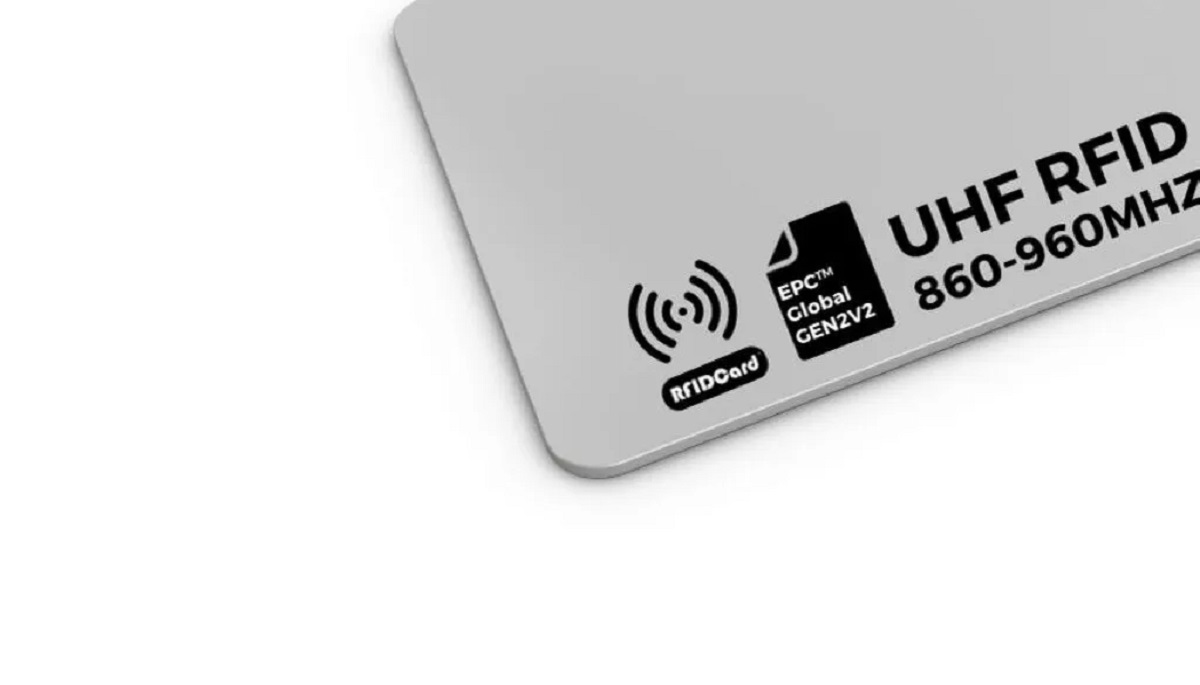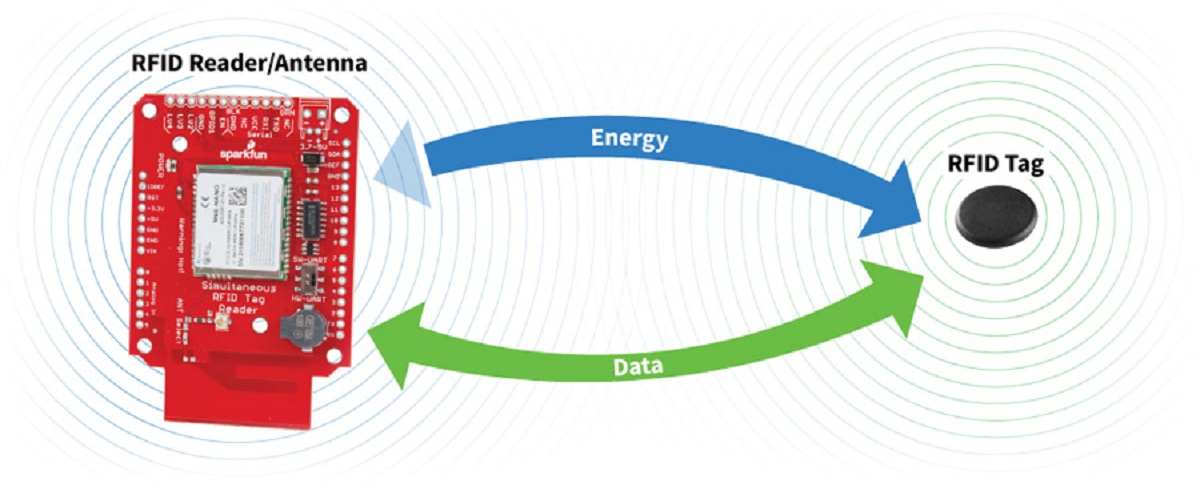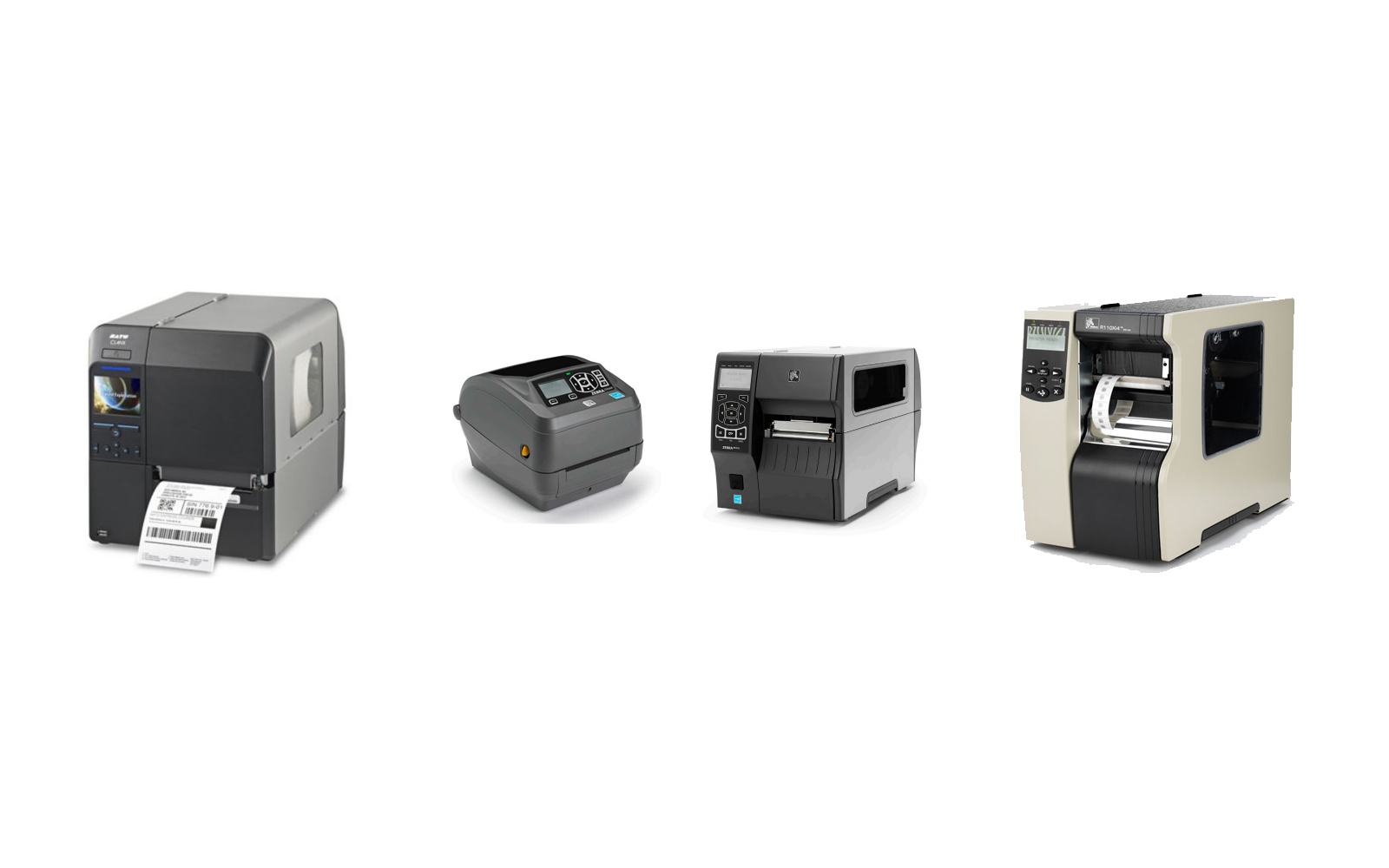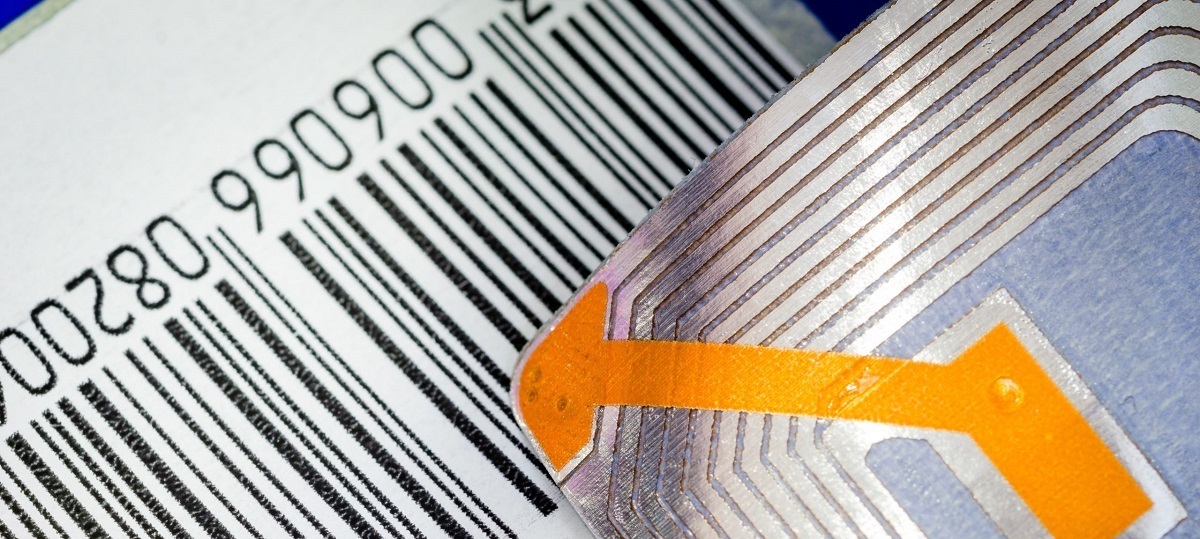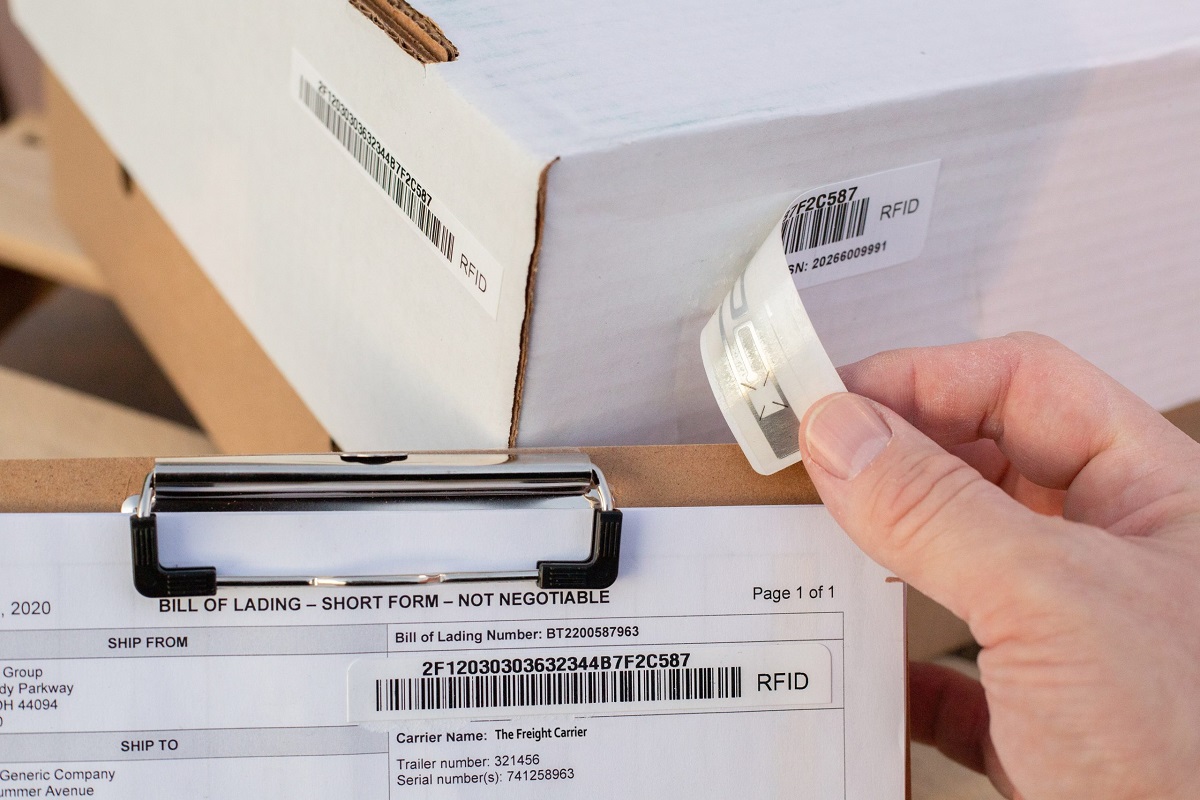Introduction
With the advent of advanced technology, warehouses have transformed from traditional storage spaces to highly efficient and automated facilities. One such technology that has revolutionized warehouse operations is RFID (Radio-Frequency Identification). RFID has become a game-changer, enabling warehouse operators to streamline their inventory management, reduce manual errors, and improve overall operational efficiency.
RFID technology uses radio waves to identify and track objects equipped with RFID tags. These tags contain electronically stored information that can be read and processed by RFID readers. By implementing RFID in warehouses, businesses can achieve real-time visibility of their inventory, enhance asset tracking, and optimize supply chain processes.
The components of an RFID system include RFID tags, RFID readers, RFID antennas, and RFID middleware. RFID tags are attached to individual products or packaging, while RFID readers capture the data from these tags. RFID antennas enable communication between the tags and readers, and the RFID middleware serves as the interface between the RFID system and the warehouse management system (WMS).
RFID integration with the warehouse management system can seamlessly transfer data between the two systems, allowing for accurate and efficient inventory management. By utilizing RFID technology, warehouses can achieve higher inventory accuracy, faster cycle counts, reduced labor costs, improved order fulfillment, and better overall supply chain visibility.
RFID systems operate on different frequency bands depending on the application requirements. The most commonly used frequency bands include low-frequency (LF), high-frequency (HF), and ultra-high-frequency (UHF). Each frequency band has its own advantages and limitations, and the choice depends on factors such as read range, cost, and interference susceptibility.
In this article, we will explore how RFID works in a warehouse setting and delve into the benefits and challenges associated with its implementation. By understanding the intricacies of RFID technology and its impact on warehouse operations, businesses can make informed decisions about incorporating it into their supply chain management strategies.
What is RFID?
RFID stands for Radio-Frequency Identification, and it is a technology that uses radio waves to identify and track objects. It is a contactless method of data transmission, enabling the automatic capture of information without the need for physical contact or line-of-sight.
RFID technology consists of two main components: RFID tags and RFID readers. RFID tags, sometimes referred to as transponders or smart labels, are small electronic devices that contain a unique identifier and other data. These tags are attached to objects or embedded within them, such as product labels, packaging, or even implanted in animals or humans.
RFID readers are devices that emit radio waves and receive signals back from the RFID tags within their range. The readers can communicate with multiple tags simultaneously and capture the information stored within them. The captured data is then processed by a computer system, enabling real-time tracking and management of the tagged objects.
RFID technology offers several advantages over traditional barcode systems. Unlike barcodes that require a line-of-sight scanning, RFID tags can be detected and read from a distance, even when not visible to the reader. This allows for quick and efficient inventory management without the manual effort required to scan each item individually.
Furthermore, RFID tags have the ability to store and transmit more data compared to barcodes. This means that in addition to the unique identifier, RFID tags can contain additional information such as product details, expiration dates, manufacturing dates, or even maintenance records.
There are different types of RFID tags available, each with its own frequency band and capabilities. These include low-frequency (LF) tags, high-frequency (HF) tags, ultra-high-frequency (UHF) tags, and even microwave tags for specialized applications. The choice of tag depends on factors like reading range, data storage, and environmental conditions.
Overall, RFID technology offers immense potential for various industries, including warehousing, logistics, retail, healthcare, and more. By enabling automatic and accurate identification and tracking of objects, RFID improves efficiency, reduces errors, and enhances supply chain visibility. The adoption of RFID continues to grow, transforming the way businesses manage their inventory and assets.
Components of RFID System
A typical RFID system consists of several key components that work together to enable the identification, tracking, and management of objects. These components include RFID tags, RFID readers, RFID antennas, and RFID middleware.
RFID Tags: RFID tags are small electronic devices that contain an antenna and a microchip. The microchip stores data and the antenna enables wireless communication with RFID readers. RFID tags come in various forms, such as adhesive labels, cards, key fobs, or even tiny implantable chips. Each tag has a unique identifier, which is used to differentiate it from other tags in the system. Some RFID tags are read-only, meaning that the data stored cannot be modified, while others can be rewritable.
RFID Readers: RFID readers are devices that emit radio waves and capture the data from the RFID tags within their range. The readers can be fixed or handheld and are connected to a computer or network. When an RFID tag comes into the range of a reader, the reader sends a signal to activate the tag, and the tag responds with its unique identifier and any stored data. The reader captures this information and sends it to a computer system for processing and analysis.
RFID Antennas: RFID antennas are responsible for transmitting and receiving the radio frequency signals between the RFID tags and readers. They provide the necessary communication link between the two components. The size and shape of the antenna depend on the operating frequency and application requirements. Antennas can be integrated into the reader device or mounted separately, such as on walls or ceilings, to cover specific areas or zones within a warehouse.
RFID Middleware: RFID middleware serves as the bridge between the RFID system and the warehouse management system (WMS). It allows for seamless integration and data exchange between the two systems. The middleware software captures and filters the data received from RFID readers and converts it into a standardized format compatible with the WMS. It also enables additional functionalities, such as data validation, data enrichment, and event triggering based on specific RFID events.
These components work together to create a comprehensive RFID system that can provide real-time visibility, accurate tracking, and efficient management of objects in a warehouse or any other application. By leveraging the capabilities of RFID technology, businesses can optimize their inventory management, enhance supply chain operations, and improve overall operational efficiency.
RFID Tags
RFID tags play a crucial role in the functionality of an RFID system. They are small electronic devices that contain an antenna and a microchip, which stores data. These tags are attached to or embedded within objects, allowing them to be identified and tracked using radio waves.
There are different types of RFID tags available, each with its own characteristics and capabilities. The three main types of RFID tags are passive, active, and semi-passive (also known as battery-assisted) tags.
Passive RFID Tags: Passive RFID tags do not have their own power source and rely on the energy emitted by RFID readers to power up and transmit data. When a passive tag is brought within the radio range of an RFID reader, the reader emits radio waves that induce a current in the tag’s antenna. This current powers up the tag’s microchip, allowing it to send back the stored data to the reader. Passive tags are cost-effective and suitable for applications requiring short read ranges.
Active RFID Tags: Active RFID tags, on the other hand, have their own power source (usually a battery) that enables them to transmit data independently. These tags constantly emit a signal and can communicate with RFID readers within a larger range compared to passive tags. Active tags are commonly used for tracking high-value assets or monitoring the movement of objects in real-time.
Semi-Passive RFID Tags: Semi-passive tags combine features of both passive and active tags. They do not generate their own signals to communicate but have a built-in power source to power up the microchip when activated by an RFID reader. This allows semi-passive tags to conserve battery life and extend the overall tag lifespan. They offer longer read ranges compared to passive tags and can be used in various applications, such as livestock tracking or environmental monitoring.
RFID tags come in different form factors, such as adhesive labels, cards, key fobs, or even tiny implantable chips. The choice of tag depends on factors such as the application requirements, read range, environment, and the object to which the tag will be attached.
One significant advantage of RFID tags over traditional barcode labels is the ability to store and transmit more data. In addition to the unique identifier, RFID tags can contain additional information such as product details, manufacturing dates, expiration dates, or even maintenance records. This wealth of data allows for better inventory management, improved traceability, and enhanced supply chain visibility.
Overall, RFID tags are fundamental to the successful implementation of an RFID system. Whether it’s tracking inventory, managing assets, or improving security, RFID tags provide businesses with a powerful tool to streamline operations and gain invaluable insights into their supply chain.
RFID Readers
RFID readers are essential components of an RFID system that capture the data transmitted by RFID tags. They emit radio waves and receive signals back from the tags within their range. RFID readers come in different forms, including fixed readers and handheld devices, and they play a critical role in enabling real-time tracking and management of tagged objects.
RFID readers work by sending out radio frequency signals that activate the RFID tags in their proximity. When an RFID tag receives the signal, it energizes its internal circuitry and responds by transmitting its unique identifier and any other stored data back to the reader. The reader captures this information and sends it to a connected computer or network for processing and analysis.
There are various factors to consider when selecting the appropriate RFID reader for a specific application. These factors include:
- Frequency Range: RFID readers operate within specific frequency ranges, such as low frequency (LF), high frequency (HF), and ultra-high frequency (UHF). The choice of frequency depends on factors such as read range, tag compatibility, and environmental conditions.
- Read Range: The read range of an RFID reader refers to the maximum distance at which it can detect and communicate with the RFID tags. The read range is influenced by factors such as the power output of the reader, the type of tags being used, and the environment in which the system operates.
- Connectivity: RFID readers can be connected to a computer or network via various interfaces, such as USB, Ethernet, serial, or Wi-Fi. The choice of connectivity depends on the requirements of the application and the integration capabilities with existing systems.
- Antenna Configuration: RFID readers can have different antenna configurations, such as fixed or adjustable antennas. The antenna configuration affects the coverage area and the ability to read tags in specific orientations or locations.
- Processing Power: The processing power of an RFID reader determines its ability to handle and process large amounts of data efficiently. This is particularly important in applications with high tag volumes or in real-time tracking scenarios.
RFID readers can be strategically placed throughout a warehouse or facility to capture the data from RFID tags in various areas. They can be integrated into existing infrastructure, such as conveyor belts, doorways, or gates, to enable automatic reading and tracking of objects as they move through the facility.
Handheld RFID readers provide mobility and flexibility, allowing users to scan and collect data from tags in different locations. These devices are commonly used for inventory audits, asset tracking, or field operations where fixed readers may not be practical.
Overall, RFID readers are crucial components of an RFID system, enabling businesses to capture, process, and utilize the data transmitted by RFID tags. With the ability to efficiently read and communicate with tagged objects, RFID readers enhance inventory management, improve tracking accuracy, and optimize operational efficiency in a variety of industries and applications.
RFID Antennas
RFID antennas are vital components of an RFID system that facilitate communication between RFID tags and readers. They play a significant role in transmitting and receiving radio frequency signals, enabling the detection and capture of data from RFID tags within their range.
RFID antennas are available in various shapes and sizes, each designed to optimize performance based on specific application requirements. The main functions of RFID antennas include:
- Transmitting RF Signals: RFID antennas transmit radio frequency signals to power up passive RFID tags and activate their microchips. The transmitted signal energizes the tag’s antenna, allowing it to respond with its unique identifier and any stored data.
- Receiving RF Signals: RFID antennas receive signals back from the RFID tags within their range. These signals contain the information stored in the tags, such as the unique identifier and additional data. By capturing these signals, the antennas enable the RFID system to collect and process the tag data.
- Shaping and Directing RF Waves: RFID antennas are designed to shape and direct radio frequency waves for optimal performance. Some antennas are designed for specific read ranges or coverage areas, while others are engineered to minimize interference or improve read accuracy.
- Match Impedance: RFID antennas are designed to match the impedance of the RFID reader and the communication frequency. Impedance matching ensures maximum power transfer between the reader and the antennas, improving overall system performance.
- Mounting and Placement: RFID antennas can be integrated into the RFID reader device or mounted separately in specific locations within the facility. The placement and orientation of the antennas affect the coverage area and the ability to read tags in different orientations or locations.
The design and characteristics of an RFID antenna depend on factors such as the operating frequency, read range requirements, and environmental conditions. There are different types of RFID antennas, including linear polarized antennas, circular polarized antennas, near-field antennas, far-field antennas, and phased array antennas.
Linear polarized antennas emit radio waves in a specific direction, enabling focused coverage in a particular area. Circular polarized antennas transmit and receive waves in multiple directions, providing better read accuracy in dynamic environments with tags in varying orientations. Near-field antennas are designed for short-range applications, while far-field antennas are suitable for long-range tracking.
Phased array antennas use multiple antenna elements and advanced signal processing techniques to steer and focus the RF beam, allowing for precise control over the read range, coverage area, and read accuracy. These antennas are commonly used in applications with complex tag placement or challenging environmental conditions.
Proper installation and positioning of RFID antennas are crucial for optimal system performance. Factors such as the number of antennas, their configuration, and the physical environment can impact the coverage area, read accuracy, and overall system reliability.
By strategically selecting and positioning RFID antennas, businesses can achieve improved read rates, increased read ranges, and enhanced operational efficiency in their RFID-enabled operations, including warehousing, logistics, retail, and asset tracking.
RFID Middleware
RFID middleware serves as a vital component in an RFID system, acting as a bridge between the RFID hardware, such as readers and antennas, and the software applications, such as the warehouse management system (WMS) or enterprise resource planning (ERP) system. It facilitates the seamless integration and data exchange between these components, enabling efficient and accurate management of RFID data.
RFID middleware software plays several critical roles in the RFID system, including:
- Data Collection and Filtering: RFID middleware collects and filters the data received from the RFID readers. It ensures that only relevant and accurate information is processed and passed on to the downstream systems. This filtering functionality helps reduce unnecessary data overload in the system and improves overall processing efficiency.
- Format Conversion and Data Enrichment: RFID middleware can convert the raw data obtained from the RFID readers into a standardized format that is compatible with the downstream systems, such as the WMS or ERP. It also has the capability to enrich the RFID data by adding additional information or context based on predefined rules or business logic.
- Event Triggering and Workflow Management: RFID middleware can be configured to trigger specific events or workflows based on the detection or movement of RFID tags. For example, when a tagged item enters or leaves a designated zone, the middleware can initiate a workflow, such as generating an alert or updating the inventory status in real-time.
- Integration with Backend Systems: RFID middleware seamlessly integrates RFID data with the WMS, ERP, or any other backend systems in the organization. It establishes a reliable and secure connection, allowing the RFID data to be processed and utilized by other business applications for inventory management, order fulfillment, reporting, or analytics.
- Device Management and Monitoring: RFID middleware provides functionality for device management and monitoring. It allows administrators to monitor the status and health of RFID readers, antennas, and other hardware components in real-time. It also provides tools to configure and update the firmware of the RFID devices remotely.
The versatility and flexibility of RFID middleware software enable businesses to customize and tailor the RFID system according to their specific needs and processes. It helps streamline data flow, eliminate manual errors, and ensure accurate and timely information exchange between the RFID system and other systems in the organization.
By harnessing the capabilities of RFID middleware, businesses can achieve enhanced inventory accuracy, improved supply chain visibility, and optimized operational efficiency. The middleware acts as a crucial link in the RFID ecosystem, allowing for seamless integration and unlocking the full potential of RFID technology in warehouse management and beyond.
RFID Integration with Warehouse Management System
Integrating RFID technology with a warehouse management system (WMS) can significantly enhance operational efficiency, inventory management, and overall visibility within a warehouse environment. RFID integration allows for the seamless exchange of data between the RFID system and the WMS, enabling real-time tracking, accurate inventory management, and streamlined warehouse operations.
When RFID technology is integrated with a WMS, the RFID readers capture data from RFID tags attached to or embedded within products or assets. This data is then transmitted to the WMS, where it is processed, analyzed, and utilized for various warehouse management tasks, such as:
- Real-Time Inventory Tracking: By integrating RFID with the WMS, businesses can achieve real-time visibility of their inventory. RFID technology enables continuous, automatic scanning and tracking of tagged items, providing instant updates on item locations, quantities, and movements within the warehouse. This real-time inventory visibility allows for accurate stock level management, reduces out-of-stock situations, and improves order fulfillment rates.
- Efficient Receiving and Put-away: RFID integration streamlines the receiving and put-away processes within the warehouse. As items arrive, RFID readers automatically capture their tag data, instantly updating the WMS with the received quantities and locations. This eliminates the need for manual scanning or data entry, saving time and minimizing errors. Warehouse operators can quickly identify the optimal storage location for each item, improving overall put-away efficiency.
- Picking and Packing Accuracy: RFID technology enhances picking and packing accuracy by ensuring that the right items are selected and included in each order. RFID readers can verify the presence and accuracy of items in real-time, minimizing picking errors and reducing the risk of shipping incorrect items to customers. This improves order accuracy, customer satisfaction, and reduces costly returns.
- Asset and Equipment Tracking: RFID integration enables efficient tracking of warehouse assets, equipment, and even personnel. By attaching RFID tags to assets, such as forklifts, pallets, or containers, businesses can monitor their locations and movements within the warehouse. This information helps optimize asset utilization, streamline equipment maintenance, and improve overall warehouse productivity.
- Reporting and Analytics: RFID data integrated with the WMS can be used to generate comprehensive reports and analytics. The data collected from RFID tags provides valuable insights into inventory levels, movement patterns, picking and packing productivity, and other key performance indicators. These reports and analytics help identify bottlenecks, improve process efficiency, and make informed business decisions.
The integration of RFID with a WMS brings significant benefits in terms of inventory accuracy, operational efficiency, and throughput. It eliminates the manual effort and potential for errors associated with traditional barcode systems, automates data capture, and provides real-time visibility into warehouse operations.
By leveraging the power of RFID integration, businesses can optimize their warehouse management processes, reduce costs, improve customer satisfaction, and gain a competitive edge in today’s fast-paced and demanding market.
RFID Frequency Bands
RFID technology operates in different frequency bands, each with its own advantages and limitations. The choice of frequency band depends on factors such as the application requirements, read range, tag compatibility, cost, and environmental conditions. The three main RFID frequency bands are low frequency (LF), high frequency (HF), and ultra-high frequency (UHF).
Low Frequency (LF): LF RFID operates in the frequency range of 125 kHz to 134 kHz. LF tags have a short read range, typically up to 10 cm. They are less susceptible to interference from liquids, metals, and other objects, making them suitable for applications where the tags may come into contact with such materials. LF RFID is commonly used for access control, animal tracking, and proximity-based identification systems.
High Frequency (HF): HF RFID operates at a frequency of 13.56 MHz. HF tags have a longer read range compared to LF tags, ranging from a few centimeters to a few meters. HF RFID offers better data transfer rates and supports more data storage on the tags. It is commonly used in applications such as payment cards, electronic passports, and asset tracking.
Ultra-High Frequency (UHF): UHF RFID operates in the frequency range of 860 MHz to 960 MHz. UHF tags have a longer read range compared to LF and HF tags, typically ranging from a few meters to several tens of meters. UHF RFID provides faster data transfer rates and supports the simultaneous reading of multiple tags, making it suitable for applications requiring high throughput and long-range tracking, such as inventory management, supply chain logistics, and retail operations.
Each frequency band has its own advantages and limitations. For example, LF and HF RFID tend to have better performance in proximity or near-field applications, while UHF RFID excels in long-range and high-volume scenarios where rapid identification and tracking of multiple tags are required.
It is important to consider the regulatory restrictions and limitations associated with each frequency band, as they vary across countries and regions. Some frequency bands may require licensing or have limited available spectrum, which can impact the implementation and operation of RFID systems.
Furthermore, the choice of RFID frequency band also depends on tag compatibility with existing infrastructure and systems. It is crucial to ensure that the RFID reader and antenna are compatible with the specific frequency band used by the tags to ensure seamless communication and data exchange.
By understanding the characteristics and capabilities of different RFID frequency bands, businesses can make informed decisions when implementing RFID technology for their specific applications. The right choice of frequency band will ensure optimal performance, improved efficiency, and enhanced tracking capabilities in various industry sectors and operations.
How Does RFID Work in Warehouse?
RFID (Radio-Frequency Identification) technology has revolutionized warehouse operations by providing real-time visibility, accurate tracking, and streamlined inventory management. The implementation of RFID in warehouses involves a multi-step process that enables the efficient utilization of this technology:
Tagging: The first step is to attach or embed RFID tags onto individual products or packaging. These tags contain unique identifiers and sometimes additional data, such as product details or expiration dates. The tags can be adhesive labels, cards, or even tiny chips that are applied to the items.
Reader Infrastructure: Next, RFID readers and antennas are strategically placed throughout the warehouse. These devices emit radio waves and capture the data transmitted by the RFID tags. The reader infrastructure ensures adequate coverage and read range within the warehouse space.
Data Capture: As products or assets move through the warehouse, the RFID tags attached to them pass within the range of the RFID readers. The readers emit radio waves that activate the tags, which then respond by transmitting their unique identifiers and other data back to the readers. The RFID readers capture this data, providing real-time information on the location, quantity, and other pertinent details of the tagged items.
Data Processing and Integration: The captured RFID data is processed and integrated into the warehouse management system (WMS) or other backend systems. RFID middleware software may be utilized to convert and format the raw RFID data into a standardized format compatible with the WMS. This integration ensures that the RFID data seamlessly integrates into existing inventory management and operational processes.
Real-Time Visibility: With RFID technology, warehouses gain real-time visibility into their inventory. By continuously scanning RFID tags as they move through the warehouse, businesses can monitor the precise location of items, track their movements, and accurately update inventory levels. This real-time visibility improves inventory accuracy, reduces stockouts and overstock situations, and enables more efficient order fulfillment processes.
Automation and Efficiency: The automation capabilities of RFID contribute to increased warehouse efficiency. With RFID, manual processes such as barcode scanning or manual data entry are minimized or eliminated. RFID readers can capture multiple tags simultaneously, reducing the need for line-of-sight and speeding up the inventory management process. This automation leads to improved operational efficiency, reduced labor costs, and fewer errors in inventory tracking and management.
Analytics and Insights: The data collected from RFID tags can be leveraged to generate valuable analytics and insights. By analyzing the RFID data, businesses can identify trends, optimize warehouse layouts, streamline order picking processes, and make data-driven decisions to further optimize operations. These insights help in improving warehouse performance, reducing costs, and meeting customer demands more effectively.
Overall, RFID technology revolutionizes how warehouses manage their inventory, track assets, and optimize operations. By implementing RFID systems, businesses can achieve real-time visibility, enhanced automation, and efficient inventory management, ultimately leading to improved customer satisfaction and a competitive edge in the marketplace.
Benefits of Using RFID in Warehouse
The use of RFID (Radio-Frequency Identification) technology in warehouses brings a multitude of benefits, revolutionizing inventory management, improving operational efficiency, and enhancing overall supply chain visibility. Here are some key benefits of using RFID in a warehouse:
- Real-time Visibility: RFID enables real-time visibility into inventory levels and movement within the warehouse. By continuously scanning RFID tags as they move through the facility, businesses have instant access to accurate information about stock levels, location, and movement of items. This real-time visibility helps optimize inventory management, reduce stockouts, and enhance order fulfillment efficiency.
- Improved Inventory Accuracy: RFID technology ensures higher inventory accuracy compared to traditional methods such as manual counting or barcode scanning. By automating data capture and minimizing human error, RFID helps eliminate discrepancies and provides accurate inventory counts, reducing out-of-stock situations, and minimizing overstock scenarios.
- Enhanced Operational Efficiency: With RFID, manual processes such as barcode scanning or manual data entry are replaced with automated and efficient data capture. RFID readers can quickly and accurately capture multiple tags simultaneously, reducing the time and effort required for inventory management. This automation results in streamlined operations, improved labor productivity, and reduced costs.
- Optimized Supply Chain Processes: RFID technology allows for the seamless integration of information throughout the supply chain. By enabling real-time visibility and accurate data sharing, RFID facilitates faster and more effective decision-making related to supply chain activities such as procurement, distribution, and order fulfillment. This optimization reduces lead times, enhances customer service, and improves overall supply chain performance.
- Enhanced Asset Tracking: RFID enables efficient and accurate tracking of assets within the warehouse. By attaching RFID tags to assets such as equipment, pallets, or containers, businesses can monitor their location and movement in real-time. This helps minimize asset loss or misplacement, optimize asset utilization, and streamline maintenance processes.
- Reduced Manual Errors: RFID technology eliminates the potential for human error that is inherent in manual processes such as barcode scanning or manual data entry. With automated data capture, the risk of misreading barcodes or entering incorrect data is significantly reduced, resulting in more accurate and reliable inventory tracking and management.
- Improved Customer Satisfaction: The benefits derived from RFID technology, such as accurate inventory counts, faster order fulfillment, and reduced stockouts, ultimately lead to improved customer satisfaction. By meeting customer demands promptly, accurately, and efficiently, businesses can enhance their reputation, increase customer loyalty, and gain a competitive edge in the marketplace.
These benefits demonstrate how RFID technology transforms warehouse operations and contributes to overall business success. By leveraging the power of RFID, businesses can achieve higher inventory accuracy, improved operational efficiency, and enhanced customer satisfaction, ultimately driving growth and profitability in today’s dynamic and competitive business environment.
Challenges of Implementing RFID in Warehouse
While RFID (Radio-Frequency Identification) technology offers numerous benefits for warehouse operations, implementing it does come with certain challenges. These challenges need to be carefully considered and addressed for successful RFID integration in a warehouse setting. Here are some common challenges associated with implementing RFID in a warehouse:
- Cost: One of the primary challenges is the cost associated with implementing an RFID system. The cost includes not only the RFID tags, readers, antennas, and middleware but also the infrastructure upgrades and integration with existing systems. Initial investments can be significant, and businesses need to carefully evaluate the return on investment (ROI) and long-term benefits of RFID implementation.
- Tag Placement and Readability: Selecting the appropriate tag placement and ensuring consistent readability can be a challenge. The placement of RFID tags on items needs to be carefully planned to ensure they are easily accessible to readers while being protected from damage. In some cases, items with certain materials or shapes might pose challenges for tag readability, requiring careful consideration of alternative tag types or placement methods.
- Interference and Read Range: Interference from metal or liquid objects and the read range limitations can pose challenges in RFID implementation. RFID signals can be weakened or completely blocked by these materials, resulting in reduced read accuracy and performance. Warehouse layout, item composition, and environmental factors need to be considered to optimize the read range and minimize interference issues.
- Data Management and Integration: Integrating RFID data with existing systems, such as the warehouse management system (WMS), can present challenges. RFID data needs to be properly processed, filtered, and integrated into the WMS or other backend systems. Ensuring compatibility, data security, and seamless integration can require specific expertise and careful planning.
- Training and Change Management: Implementing a new technology like RFID requires adequate training and change management. Warehouse staff needs to be trained on the use of RFID technology, including tag placement, reader operation, and data interpretation. Resistance to change or reluctance to adopt new processes can also pose challenges for successful RFID implementation. Effective communication and leadership support are essential to overcome these challenges.
- Regulatory and Privacy Concerns: RFID implementation may be subject to regulatory requirements or privacy concerns. For example, certain industries may have specific regulations governing the use of RFID technology, such as the handling of sensitive or personal information. It is crucial to comply with these regulations and address any privacy concerns related to the use of RFID tags and the data they collect.
- Scalability: RFID implementation needs to consider scalability to accommodate future growth or changes in warehouse operations. The system should be flexible enough to handle increasing tag volumes, additional reader deployments, and evolving business needs. Scalability planning ensures that the RFID system can adapt to future requirements without major disruptions or costly upgrades.
Addressing these challenges requires careful planning, collaboration between stakeholders, and leveraging the expertise of RFID solution providers. By proactively addressing these challenges, businesses can maximize the benefits of RFID technology while mitigating potential risks and ensuring a successful implementation in their warehouse operations.
Conclusion
RFID technology has revolutionized warehouse operations by providing real-time visibility, accurate tracking, and streamlined inventory management. The implementation of RFID in warehouses offers a wide range of benefits, including improved inventory accuracy, enhanced operational efficiency, optimized supply chain processes, and enhanced customer satisfaction. By leveraging RFID technology, warehouses can achieve higher inventory accuracy, reduced manual errors, improved labor productivity, and increased operational efficiency.
However, implementing RFID in a warehouse does come with challenges. These challenges include the initial cost of investment, tag readability and placement issues, interference and read range limitations, data management and integration complexities, training and change management requirements, regulatory and privacy concerns, and scalability considerations.
Despite these challenges, successfully implementing RFID technology in a warehouse requires careful planning, stakeholder collaboration, and the expertise of RFID solution providers. It is important to carefully analyze the specific requirements and objectives of the warehouse, select the appropriate RFID components, and address challenges through proper training, change management strategies, and compliance with regulatory requirements.
Overall, the benefits of using RFID technology in a warehouse far outweigh the challenges. RFID enables real-time visibility, improved inventory management, accurate tracking of assets, enhanced operational efficiency, optimized supply chain processes, and improved customer satisfaction. By embracing RFID technology and effectively addressing the associated challenges, warehouses can transform their operations, gain a competitive edge, and drive growth in today’s dynamic business landscape.











